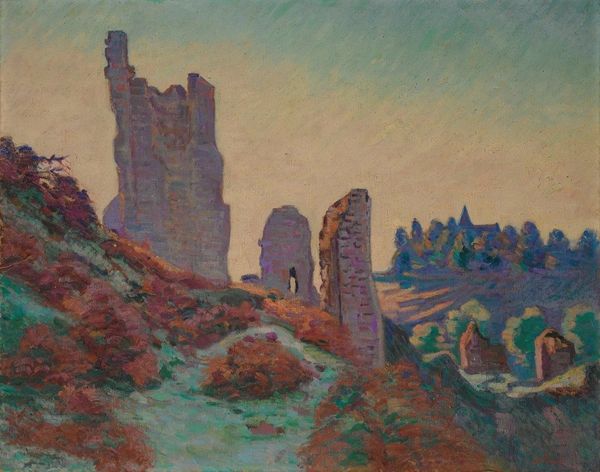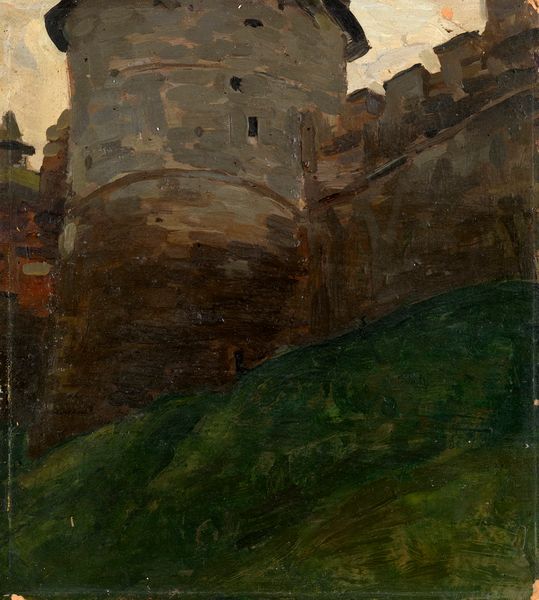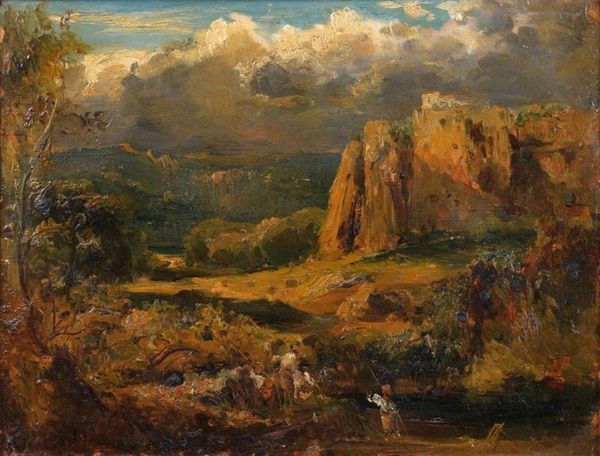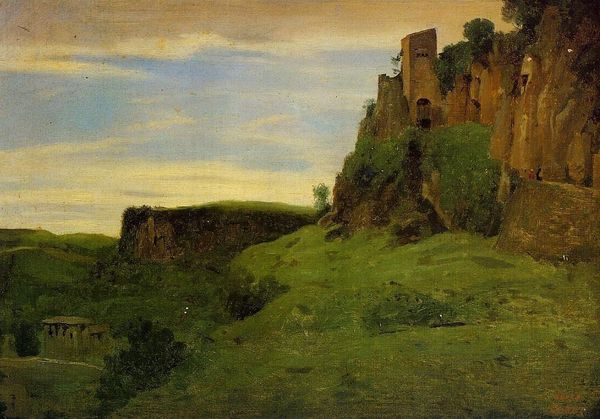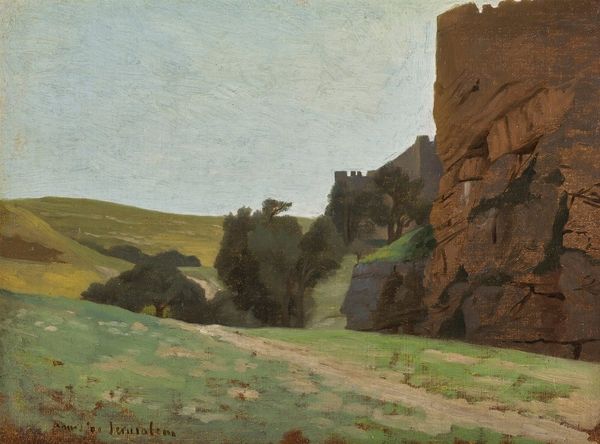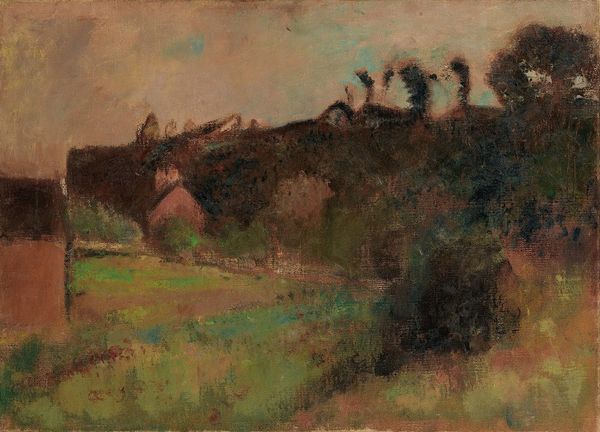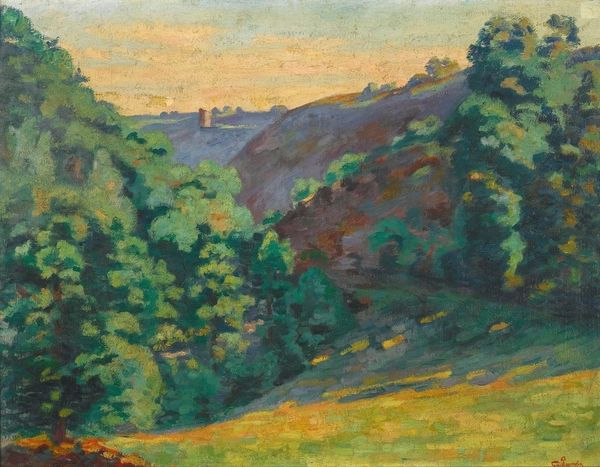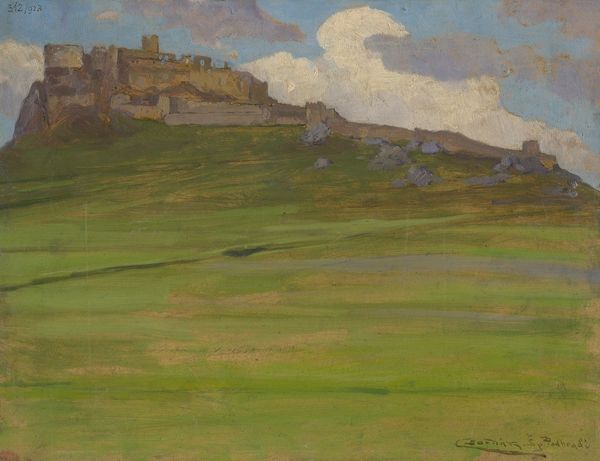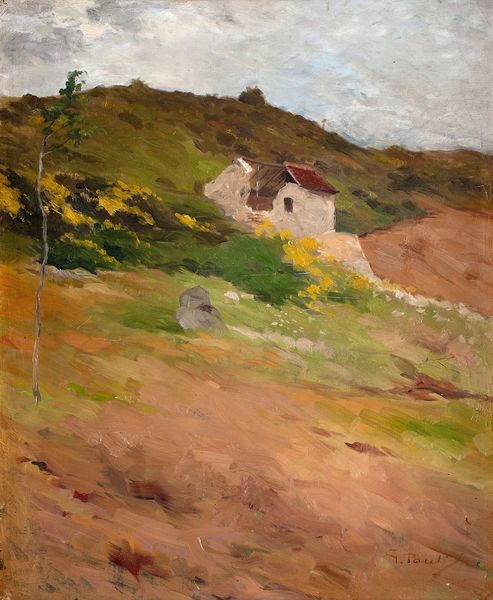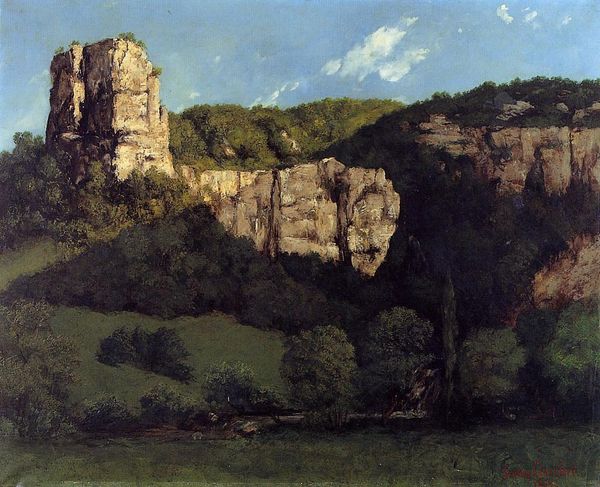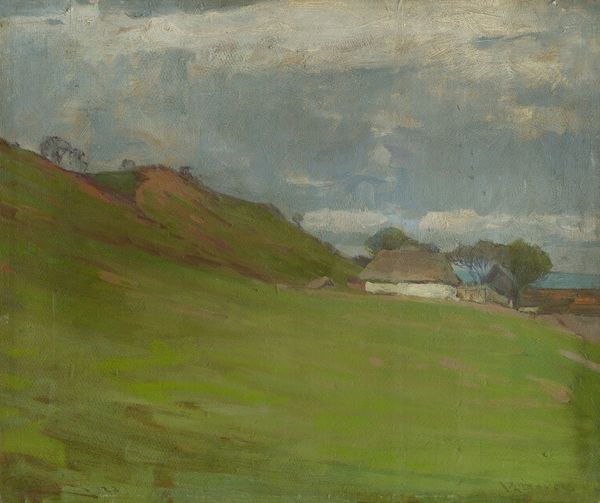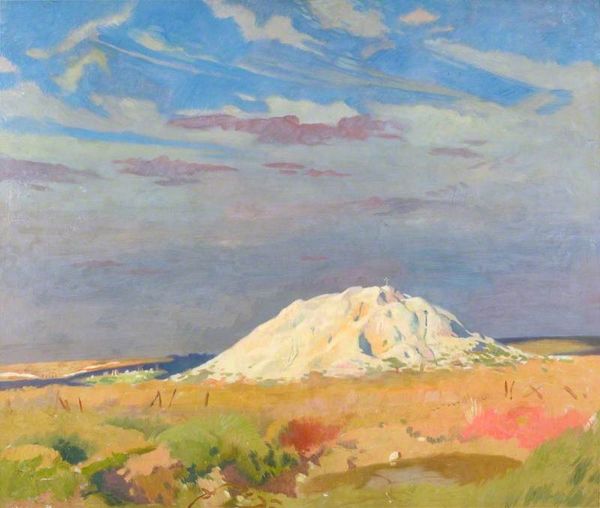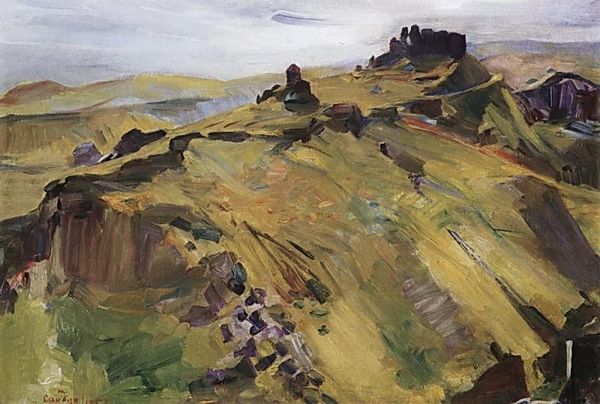
Copyright: Public Domain: Artvee
Editor: At first glance, the monumentality and its material decline invoke a strong feeling of time and resilience. Curator: Indeed. We are looking at "The Ruins of Slane Castle," an oil on canvas by Ľudovít Čordák, painted around 1902-1903. It elegantly straddles Impressionist techniques and Romantic subject matter. Editor: The textures! One can almost feel the rough, crumbling stone and the heavy brushstrokes giving density to the hilltop's vegetation. What paints and tools could evoke such a tangible surface? And how would the site-specific nature of working *en plein air* affected his choices? Curator: Observe the strategic placement of the castle ruins against the vast, subtly clouded sky. Notice how the tower and its ruined companions command the composition, drawing the eye upward, symbolizing endurance against temporal forces. The materiality serves this message. Editor: Yes, and how those very forces reshape matter. I’m thinking about how the creation process mirrors natural decay—the layering of pigment as a stand-in for geological stratification. Did the artist aim to highlight the labor, both physical and societal, invested in constructing and ultimately failing to maintain Slane Castle? Curator: The color palette is key here. Čordák’s use of muted greens, browns, and blues constructs a contemplative mood, inviting the viewer to reflect not only on history but on the broader cycles of civilization. This arrangement serves a purpose. Editor: Precisely! The fading grandeur raises questions of what exactly historical narratives entail—the physical tolls of erecting imposing edifices and also those unseen struggles, especially involving natural forces in resistance. Curator: In scrutinizing Čordák's interplay between structural form and ethereal atmosphere, we access profound visual narratives around the romantic decay, an enduring interest. Editor: Examining materiality enriches our understanding of landscape painting and encourages further investigation of artistic methods used for highlighting both human exertion and historical processes embedded in stone.
Comments
No comments
Be the first to comment and join the conversation on the ultimate creative platform.
